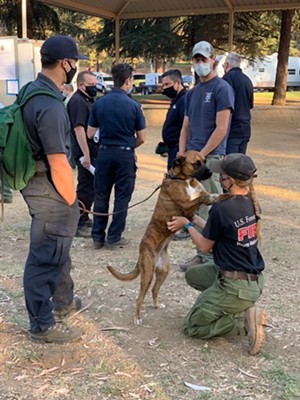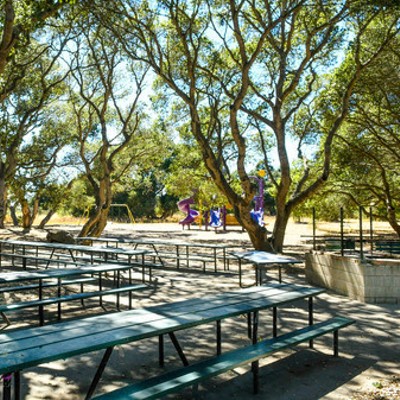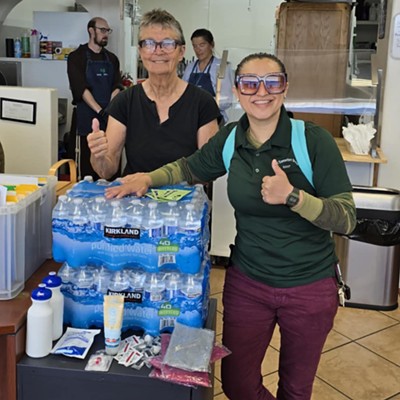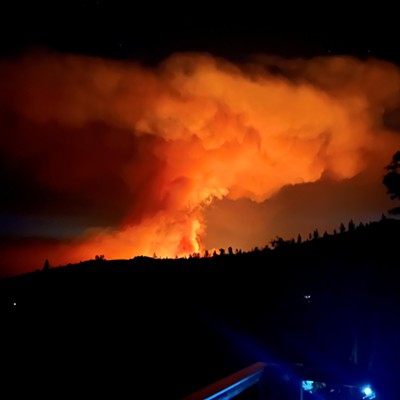Sam Dudley replayed the Montecito debris flow over and over in his head driving to and from work for months after the 2018 disaster.
“A lot of things really stacked up that made that experience really hard,” the Santa Barbara County firefighter said. “Finding children severely injured, and specifically we found one child deceased. That really stuck with me, and I carried this guilt of ‘could I have done more?’”
Dudley said that he realized he needed more help to cope with the effects of this disaster, which killed 23 people and injured 165. He then connected with an LA Fire captain who acted as a peer supporter to provide confidential, mental health help to fellow first responders.

He spoke about his feelings and his experience, which prompted the captain to encourage Dudley to see a therapist, he said.
“I met with a counselor … and we went through from start to finish what I was struggling with from the debris flow. We did the therapy and it was very helpful and just an incredible experience,” Dudley said. “The peer supporter recognized that I needed a professional’s help. We’re kind of the bridge between the professional and the person who may or may not be intimidated from getting help.”
After his positive experience with the peer support team and trauma-informed therapy, Dudley went through training to become a peer supporter himself. He’s worked for the past two years as a handler for the department’s emotional support canine, Rhonda, to help other first responders get mental health care.
Rhonda is trained to interrupt behaviors like crying or yelling by jumping on to them and showing people affection, and she works as “the world’s best ice breaker” to get emotional conversations started. Dudley can then give his fellow firefighters the guidance they need for mental health help without an awkward initiation.
“With this career and life in general, we just don’t know what comes next and getting help before the next thing comes is important,” he said. “The community relies on us in their darkest days; as first responders, we need to be that glimmer of hope. But we can’t help people if we aren’t at our best—meaning physically fit and mentally fit to perform our job.”
According to a 2018 Substance Abuse and Mental Health Services Administration report, 37 percent of fire and emergency medical service professionals have contemplated suicide, nearly 10 times the rate of American adults. Due to the traumatic events, natural disasters, and hazards they are exposed to at their jobs, first responders are also more likely to experience behavioral health issues like depression, anxiety, and post-traumatic stress disorder (PTSD).
To combat this and the stigma connected with seeking help, county nonprofit One805 received a $144,000 grant from the international organization Direct Relief to fund one full year of mental health services that will provide culturally competent care to first responders for free.
However, nonprofit officials and firefighters are concerned about what happens once the funding is exhausted.
“The fact we were able to secure this funding is amazing; a stronger fire department means a stronger community,” Dudley said. “We do need financial support for this and it’s extremely important moving forward, but I do have a lot of faith in the community and people care.”
County Fire and first responders use Counseling Team International (CTI), a private company that has clinicians with backgrounds in trauma or an understanding of first responders’ experiences and lifestyles, said Alana Negroni, the executive director for CTI.
“Nonculturally competent clinicians have done great work, but whatever populations you serve, you have to understand what they are struggling with and what they are going through,” Negroni said. “You have to hold time for that responder. You have to listen to the details of the story in whatever way they express that, and you have to manage that and the results of that trauma.”
First responders have come in for services in the past after having a previous clinician cry because of the experiences the responders shared, jading their opinion about seeking help, she said.
“First responders tend to be very cynical; 90 percent of their day is dealing with the really crummy 10 percent of the world. They are constantly being flooded with what you or myself experience once in a lifetime,” Negroni said. “When you have a clinician that doesn’t understand, you can almost do a disservice because you start to isolate the individual.”
Along with culturally competent clinicians, CTI provides crisis intervention counselors to debrief traumatic events immediately after they happen, training and certifications, and an inpatient/outpatient substance use and post traumatic stress disorder care center specifically for first responders, she said.
This program is also completely separate from insurance policies and county funding, making it more appealing for first responders to seek help, Santa Barbara County Peer Support Team Regional Coordinator Tony Pighetti said.
Many first responders don’t want the tie back to the agency or a record stating they’ve sought care because of the historical stigma surrounding mental health issues within the industry or for fear that they would be deemed unfit for duty, Pighetti said. Through the program, someone could go to a clinician, get help, and no one would ever know, making it easier for first responders to seek help and encouraging them to talk to someone.
Eighty of the 172 county firefighters are peer support team members, he said. About 25 percent of county firefighters are reaching out to peer support for help during the year and 10 percent of them see a clinician at least once, Pighetti said, citing a report conducted by One805—where he volunteers as an executive board member.
“We are now in the middle of a generation trying to be more proactive than reactive,” he said. “There’s still the stigma, we have a long way to go. There’s the saying that it’s OK to not be OK, but we’re trying to add that it’s not OK to not do anything about it.”
The $144,000 ensures there will be some continued care, but there’s nothing to ensure the program’s long-term stability, Pighetti said.
“I stress everyday about the sustainability of the program. Getting a grant from an organization like Direct Relief International that is giving us that one year funding really relieves the pressure so I can focus on the work we are doing,” he said. “Now, I’m realizing that we’re here in December and we’re already a couple of months into this, and I’m thinking about funding for the next cycle.”
Relying on donations as a main funding source concerns Pighetti because the competition for funding is “as hard as it’s ever been,” he said. However, the program received support from top to bottom in first responding agencies and from the general public, keeping him optimistic about its future.
“We’ve always been able to make it work, so let’s just keep the momentum going,” Pighetti said. “We are doing things we couldn’t do three, four, five years ago. I’m super proud of how far we’ve come and can’t wait to see where we go.”
Reach Staff Writer Taylor O’Connor at [email protected].










